It has been a long time since I have randomly traveled to a town this small.
Clinton, South Carolina. Population as of the 2011 Census: 8,489. One of those sleepy little towns nestled right next to the over-sized buckle of the Bible-Belt. Neighboring Clinton is Laurens, with a population of 9,134, yet Laurens feels much larger than Clinton in a number of ways.
Laurens reminds me more of Menomonee, at least on the busier town edges. With major state highways intersecting the town lending to more development, there is a Wal-Mart, a textile production facility, a wider array of restaurants, bars, cafés, shops and other indicators of commerce and an active populace. I am writing this from a table in Clock of Laurens; a larger restaurant which reminds me very much of the Green Mill in Menomonee that I visited a number of times. Clock is one of the only places open on a Sunday that also has free WiFi. In a religion dominated area such as this, finding anything open on a Sunday is rare, and even more so before noon.
Clock has been full of people today. About a 50/50 mix of whites and minorities, and many in their Sunday best. A table of three older black women is next to me, all wearing their white Sunday suits, looking radiant and enjoying their brunch coffee. Others dress nicely, to the point where you know they are returning from Sunday services, but not so much that it is a fancy thing for them.
My host on this trip took me for a driving tour this morning. We drove through the town square of Laurens and around the surrounding hills of the community. It is a cold morning; only about 5-celsius and raining. This is not my optimal hiking and photographing weather on this trip, but I will get to it. This was more of a find something interesting to investigate and photograph on another day kind of tour.
Laurens has its small-town charms. A town square that reminds me of Marietta, but instead of a park the center square features a grandiose, classic courthouse building. The square is surrounded by small shops and restaurants and the edges of the square are peppered with churches of varying Christian denominations, sometimes sharing property borders and multiple churches on the same block.
A waitress turns the corner carrying a large tray, stacked high with fried foods; onion rings and French fries and an assortment of sandwiches. I have yet to see a co-op or organic food store. I have yet to see a single sign of promoting healthier lifestyles in this area. There are fast-food restaurants up and down every major road, and they thrive.
I had Sonic for the first time last night. My host told me I need to try it, since in all my time traveling I never had tried a Sonic burger. I went all out – a double cheeseburger and sweet potato tots.
As I dined, I commented that I could feel the years of my life just falling away. I think back to conversations I’ve had and heard in the past, where people rave about Sonic and how good the food is. The pools of grease in the bottom of the tot-cup and the wadded up, processed burger in a foil envelope would have me arguing against that. Quality doesn’t come pre-packaged or from a deep fryer.
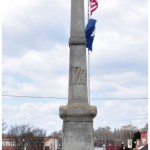 Our tour of the outskirts of Laurens left me with the distinct impression that this is an area that time has forgotten. Scattered broken down homes, mobile homes, farms and warehouses mixed together in a rural countryside that is more scrub brush and wooded than populated or tended to. Rusted out, collapsing trailers sitting on blocks next to lived-in but similarly breaking down mobile units; some with an array of outdoor children’s toys that even middle-class families might look at and think unnecessary given their cost.
Our tour of the outskirts of Laurens left me with the distinct impression that this is an area that time has forgotten. Scattered broken down homes, mobile homes, farms and warehouses mixed together in a rural countryside that is more scrub brush and wooded than populated or tended to. Rusted out, collapsing trailers sitting on blocks next to lived-in but similarly breaking down mobile units; some with an array of outdoor children’s toys that even middle-class families might look at and think unnecessary given their cost.
Conversing with my host as we drove around I inquired as to how much housing costs in this area. She told me that most of the actual houses we were driving past would probably be between $30,000 and $40,000. The higher-end homes with big porches, pillars and fancy gardens, perhaps $100,000 or a bit more. She said that her and her husband were looking at a nice house that was only $40,000 as opposed to a more fixer-upper house they had originally 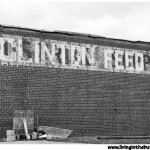 looked at for $20,000. The disparity of the housing market in America, I guess. These higher-end homes are aged but in many cases very well kept, and beautiful. A similar house in an area such as East Aurora or Hamburg would easily fetch $200,000, or more.
looked at for $20,000. The disparity of the housing market in America, I guess. These higher-end homes are aged but in many cases very well kept, and beautiful. A similar house in an area such as East Aurora or Hamburg would easily fetch $200,000, or more.
But with the landscape of decomposing structures, I was fascinated. So many places I could see doing a little photography. Perhaps I could catch sunbeams shinning through a hole in the roof using a slow shutter speed, or finding the texture of a moss growing on abandoned furniture, with water from the rainfall dripping on it. Our goal was to find somewhere to eat with WiFi and somewhere I could catch up on everything I had missed over the last 36-hours though, so trespassing into abandoned structures wasn’t on the immediate agenda.
This is what brought us to Clock. Calling around to local cafés and other restaurants yielded a very limited selection of options. Very limited. Clock was it if I wanted some internet access.
The meal was decent and pretty typical of a restaurant that aims to serve a broad base of clients well over the course of a day, rather than focusing on a specific or specialized culture, style or service. After spending a couple hours loitering and drinking weak, flavorless coffee we headed back out toward Clinton where the cold and the rain were sure to thwart most of our best intentions for doing something photographic this day.
Day two stared with high winds, cold temperatures and a lot of sun, but this should play fairly well into getting some photography in.
 As the day progressed the winds would not subside. The rain and cold of the day before has been replaced by sunshine, but winds gusting near 40-mph, and the temperatures did not rise above 5-celsius. The wind chill burned cold on what would otherwise be a pleasant day.
As the day progressed the winds would not subside. The rain and cold of the day before has been replaced by sunshine, but winds gusting near 40-mph, and the temperatures did not rise above 5-celsius. The wind chill burned cold on what would otherwise be a pleasant day.
After a late breakfast in a small café on the square named Steamers, we took a walk around the town square of Clinton. Again, a place lost in time. The small, conjoined brick buildings are a throw-back to an older time. Awnings and metal signs rattled in the high winds. Flags by the square memorial snapped loudly as they whipped around their pole. We walked toward the rail depot and mill, quickly losing the sidewalks and traversing busy train tracks in favor of loose stone paths.
We are greeted almost hourly by train whistles in town. Freight trains come through town frequently, day and night, and the town is surrounded by rail lines.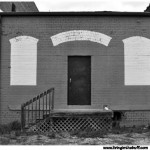
The depot area is a line of small, brightly colored buildings, which are now anything but rail depot businesses. A small gym, the first sign I’ve noticed that there is the promotion of healthier lifestyles, but the building itself is no bigger than a mid-sized house. Most of the buildings stand vacant. Broken porch decks and broken or bricked up windows that are painted white to mimic the shape of the windows which are still in place in other buildings are the most defining features of this row. Old tires lay outside one shop, while an old oxygen canister leans against the wall of another. It is Monday late morning, and we are the only signs of life just three blocks from the center of town.
Hand numbing temperatures in the wind caused us to have to return to warmer surroundings.
 In the evening as the winds settled a bit, we drove back to Laurens for a similar walk, but through Laurens Park and behind the cemetery where we explored the girders of an old, but active railroad bridge. Graffiti is carved here in the rust of the bridge metal, and the bridge spans a small creek which was now a bit swollen and moving fast due to the recent rain.
In the evening as the winds settled a bit, we drove back to Laurens for a similar walk, but through Laurens Park and behind the cemetery where we explored the girders of an old, but active railroad bridge. Graffiti is carved here in the rust of the bridge metal, and the bridge spans a small creek which was now a bit swollen and moving fast due to the recent rain.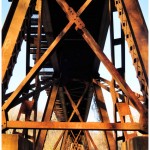
Further along, up in the town square, we took some time to enjoy the spring flowers; some in full blossom and some still yawning toward rebirth. We walked around the courthouse and toward the old Echo Theater which had been until recently a “Redneck Shop” and a Klu Klux Klan museum; an interesting celebration of this darker side of the history of the region.
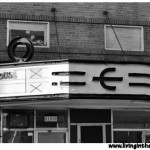 Touring these towns, even on foot, takes mere minutes. The squares are only about the size of a couple city blocks. Most of the buildings are government buildings like the courthouse, or the city hall. Or they’re tax preparers, lawyers, banks, photographers and a private loan specialist. The interesting shops and cafés were mostly closed at 7:00PM when we got there.
Touring these towns, even on foot, takes mere minutes. The squares are only about the size of a couple city blocks. Most of the buildings are government buildings like the courthouse, or the city hall. Or they’re tax preparers, lawyers, banks, photographers and a private loan specialist. The interesting shops and cafés were mostly closed at 7:00PM when we got there.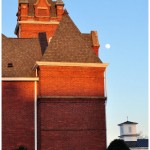
On our way home, we stopped and investigated a burned out house on the side of the rail way. The charred remains of what was once a humble home. The furnishings and trappings of family life still exist in what is otherwise a building destroyed. I took some photos of what I could, making use of the natural light streaming in from the missing roof, the broken windows and the fractured walls. A red chair still sits positioned in front of a window providing an eerie reminder that people once enjoyed sitting here and reading or perhaps just watching the trains go by not thirty feet from the house.
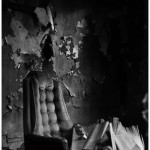 Each step in the structure was met with the crunch of broken glassware, charred wood and a number of other items strewn about the floor. I was cautious with every step, making sure there weren’t holes in the floor beneath the rubble as I moved from room to room in this tiny old dwelling.
Each step in the structure was met with the crunch of broken glassware, charred wood and a number of other items strewn about the floor. I was cautious with every step, making sure there weren’t holes in the floor beneath the rubble as I moved from room to room in this tiny old dwelling.
As the sunlight retreated, it was time to head back to Clinton.
Day three; my last day here. The sun was shinning more brightly than even the day before, but it was no warmer. However, the day did start without the whistling of high winds so I was hopeful it would have been a better day to tour the region.
We started with breakfast at Steamers again. They do omellettes right. Big, full of good stuff and filling. It kept me going all day. The coffee is lacking. The service is very attentive though.
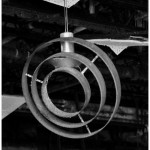 Today we visited Joanna, South Carolina in search of abandoned buildings for decent photo opportunities. As with many of the small towns in this area, Joanna is also a town lost in time. An even smaller and more desolate town square is surrounded by rural communities and subdivisions once owned by industry. Derelict structures dominate the town, both industrial and residential. The streets around the old mill are lined with houses that used to be owned by the mill and furnished for the mill workers to live in. Larger, two-level houses for the supervisors and smaller one-level houses for the working staff of the mill remind us again of a time long past. Now privately owned, these communities show the wear and tear of time. Many of the houses are brick, but the non-brick parts – roofs, porches, doors and windows – show the ravages of time, weather and the lack of resources required to keep up with how the Earth recycles everything we make.
Today we visited Joanna, South Carolina in search of abandoned buildings for decent photo opportunities. As with many of the small towns in this area, Joanna is also a town lost in time. An even smaller and more desolate town square is surrounded by rural communities and subdivisions once owned by industry. Derelict structures dominate the town, both industrial and residential. The streets around the old mill are lined with houses that used to be owned by the mill and furnished for the mill workers to live in. Larger, two-level houses for the supervisors and smaller one-level houses for the working staff of the mill remind us again of a time long past. Now privately owned, these communities show the wear and tear of time. Many of the houses are brick, but the non-brick parts – roofs, porches, doors and windows – show the ravages of time, weather and the lack of resources required to keep up with how the Earth recycles everything we make.
Communities such as this were undoubtedly once thriving centers of industry and logistics. Surrounded by railroads in a time when this was the most common and affordable method of transportation, each town was a stop, a pick-up, a place for the rail workers to pause their day. The mill sat beside the rail depot; another stop where the goods created here could be purchased, loaded and transported in trade to other places.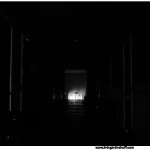
Long gone are those days and with them, these towns have all but been forgotten.
We stopped at an old school building which had been abandoned for years. The broken windows, plywood shuttered doors, and chained entrances show the proof of neglect. In the back, public lavatories for the nearby park are filled with trash, graffiti, broken walls and plumbing. On the other side, a wide opening where a large classroom window once existed, now invites trespassers. Rusted light fixtures dangle from broken ceilings; a dividing wall crumbles beside an intact chalkboard that spans at least twenty feet of wall.
On the other side of the building, signs of progress exist. Much of the building is now remodeled and being used for offices of charitable organizations. A large solar panel grid sits atop the roof, and seems out of place given the condition of the building beneath it. A quick tour of the interior of the building shows the amount of care and effort being put back into this structure. There is a small library, classrooms for GED preparation courses, religious services and a food pantry to help those in need. A broken window above a door on the interior partially reveals a room in disrepair where light from the outside can be seen through broken walls and roofing, and the breeze can be felt blowing in from the window to the remodeled hallway. A sign on the door reads, “The Future Home of Information Technology Services.”
It is time out of time.
Highway 56, connecting Joanna and Clinton shows a different side of the story. Large, beautiful houses, well maintained yards, sprawling lawns, hedgerows and paved, smooth driveways dominate the roadside landscape. Metal roofs shine in the sunlight; distant pastures with livestock and large, home-worthy barns replace the broken down and decaying structures of the town. Here you can see the disparity but vitality of the area and realize not all has been lost or forfeited as time has marched on.
The rest of the day was spent relaxing, getting ready for the trip to wind up and my flight time to head home. Back on the road, with some adventures in hand. It isn’t like the old days, but this was a step in the right direction. A step closer to happiness, in many ways, and a step back on the road to being productive, successful and as energetic as I once was.
As my flight climbs from Charlotte and rises above the layer of clouds, I can see the shadow of the plane cast by the bright, almost full moonlight. These images are reminders to me that no matter how difficult things might be, I can rise above and leave my mark on the world I will someday leave behind.
There is opportunity in these small, rural communities. Places do come and go – business and entrepreneurship alike, as has happened in many areas of the nation in these changing and often troubled times. The one thing that can be said; no matter how lost in time these towns may be, the people that live there haven’t given up on their communities. The outward appearance might not always be pretty, but there is a sense of survival, of belonging and even a sense of pride. There is the personality and charm you would expect from the southern culture. There is the faith. So much faith. They’re nestled next to the buckle of the Bible-Belt, but their faith goes deeper than the churches on every block and the constant, outward reminders of their religion. There is the faith that if they keep on going, and keep on doing what they’re doing, eventually everything is going to turn out alright.